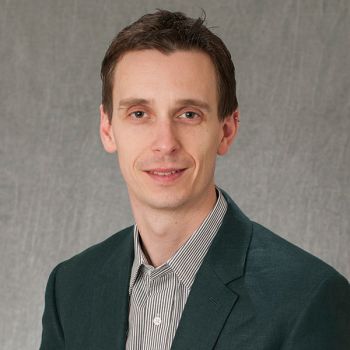
WASHINGTON (Jan. 22, 2018) — The latest “kick-and-kill” research to eliminate the HIV virus uncovered a potential obstacle in finding a cure. A recent study by researchers at the George Washington University (GW) found that latent HIV reservoirs show resistance to CD8+ T-cells, a type of white blood cell whose primary function is to kill infected cells.
“We have identified a barrier,” said Brad Jones, PhD, primary author of the study and assistant professor of microbiology, immunology, and tropical medicine at the GW School of Medicine and Health Sciences. “It is difficult to understand the nature of that barrier right now. We used our most powerful combinations against these cells, and when the dust settled we found that the virus was present at just as high levels as what we started with.”
HIV/AIDS treatment currently includes is lifelong, antiretroviral therapy while the search for a cure continues. Persistent, latent reservoirs of the virus make efforts to cure infection difficult. In order to eradicate those HIV reservoirs, researchers must find a way to eliminate persistent populations of cells with integrated HIV proviruses. The “kick-and-kill” paradigm is aimed at combining latency reversing agents (LRA) with immune effectors, such as T-cells, to wake up the virus and kill the reactivated cells.
The study, published in the Journal of Clinical Investigation, found that latent HIV reservoirs exhibit inherent resistance to CD8+ T-cells.
In contrast to other studies that used HIV models with engineered cells, the team at GW conducted their research using the CD8+ T-cells of people living with HIV, in combination with LRAs to attack and kill the infected cells.
The results suggest that cells infected by replication-competent HIV possess inherent resistance to the T-cells, which present an obstacle on the road to curing HIV.
However, Jones is optimistic about the future of HIV research and believes that the results of this study will help to improve researchers’ understanding of how to approach the virus.
“While the results are certainly not what we hoped for, we have identified what might be an important barrier in killing HIV-infected cells,” said Jones. “Now that we have a way to study it, there’s reason to think that we might be able to have more success than previous studies.”
His team will continue to work in hopes of understanding the reason for the resistance to CD8+ T-cells. They will also investigate different combination therapies, looking at those used for other conditions that may be effective in reducing HIV-infected cells.
The research article, “Latent HIV Reservoirs Exhibit Inherent Resistance to Elimination by CD8+ T-cells” is published in the Journal of Clinical Investigation.


